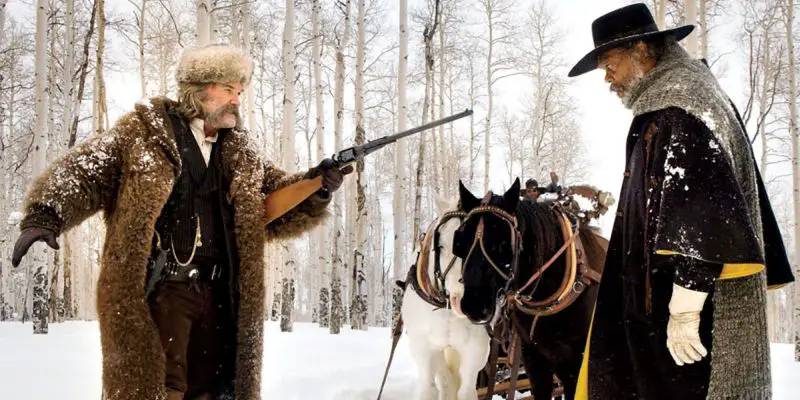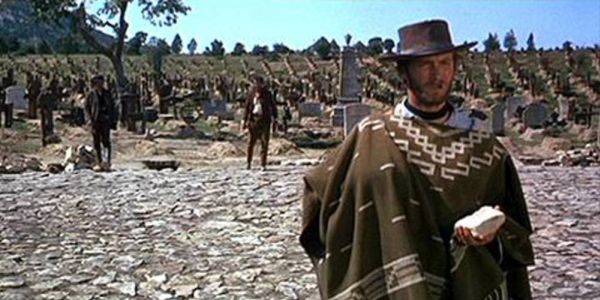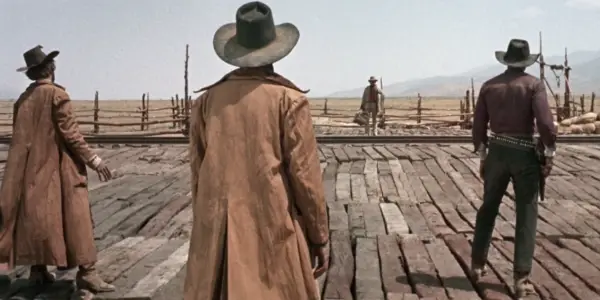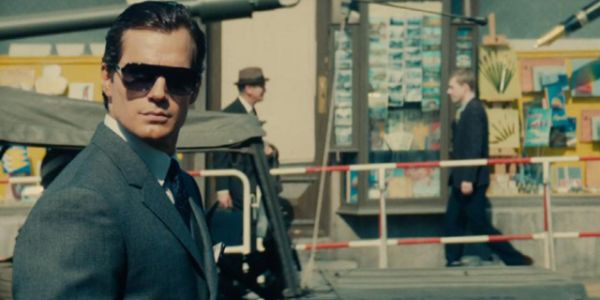What Will THE HATEFUL EIGHT Sound Like? An Analysis of Composer Morricone’s Work

Freelance film worker and a current film Phd student in…
Closely approaching Quentin Tarantino’s new film The Hateful Eight arises expectations not only because of the name he has created for himself, but also because we are aware of the repeating pattern of collaborators in his films. But this piece is not about the cast of the film nor about Tarantino’s specific style. It is about the collaborators behind the scene, specifically on his first time collaboration with Ennio Morricone as a composer of the film’s original soundtrack.
In comparison with previous films like Kill Bill (2003), Death Proof (2007), Inglourious Basterds (2009), Django Unchained (2012), in which Tarantino used Morricone’s previously composed pieces as background music, this time Morricone agreed to be the original author of the soundtrack of The Hateful Eight.
The Spaghetti Masters
Exactly because this is Tarantino’s first real western, it is impossible not to consider a comparison with the ‘king’ of westerns, famous for his use of Morricone’s music – Sergio Leone. As the first filmmaker to define the ‘spaghetti’ western genre, Leone is still today considered “a fringe giant of Italian cinema” (Sbragia, 2001).

Films like A Fistful of Dollars (1964), For a Few Dollars More (1965), The Good, the Bad and the Ugly (1966), Once Upon a Time in the West (1968), Once Upon a Time in America (1984) are masterpieces that have one thing in common: they tell the story through all the cinematic elements, cinematography, editing style, mise-en-scène and sound. But its most memorable feature is definitely the music. Who does not know the famous whistling trill that opens the main theme of The Good, the Bad and the Ugly?
Listen and Perceive!
There are two dimensions that film sound generally has: time dimension and rhythm. The time dimension is an obvious feature presenting simultaneity; simultaneous sound corresponds in time with the action on screen while non-simultaneous from the character’s past or future, e.g. memories, voices from the past, etc. Both enable recognition of synchronism.
Rhythm, on the other hand, depends on the sound coordination – sped-up/slowed-down tempo, beat and accent – and intentional disparities between the image, sound and editing (Bordwell and Thompson, 2010).
The musical score can be categorised as the non-diegetic source of sound, and is added for the dramatic effect. It accompanies character development and rhythm of the story and represents what Prendergast (1992) names the atmosphere of time and place “colour.” The effect of it is instantaneous: the ability of music to make a psychological point in film is a subtle one, and perhaps its most valuable contribution. This is what Morricone definitely does.
Emotions of the West
In Once Upon a Time in the West (1968) music is the narrator. Silence accents the stillness of the desert and calls attention to the character’s body language, accompanied by Morricone’s music in the background. The first scene features a long wait for Frank’s (Henry Fonda) gang, emphasising the tension and suspense by playing with surrounding sounds (watch the scene).
We hear the windmills squeaking, a fly buzzing and the sound of water dropping on a hat, all accenting the quietness of the desert and an expectation of action. This starts with a transition of the fly’s buzzing in the gun into the sound of train arriving. After the train leaves, the sound transitions into a slow tune of repetitive minimal unusual chords in D major of Ennio Morricone’s ‘Harmonica song’, causing anticipation and thrill in the viewer in expectation of the action.
This is exactly what Morricone’s music does. It plays with melodies and tempo, creating a contradictory set of expectations. When there is silence, the mood is going to change, where there is loud sound, immediately it can turn into pure nothing. What is considered classical understanding of interpretation of film music and what its meaning is, Morricone turns around (watch the scene).

At McBain’s farm in the desert, when the family is killed by Frank’s men during the preparation of a welcoming party for McBain’s new wife, the sudden complete silence of the crickets reflects as fear and anticipation on the characters faces. When the youngest son Timmy runs out of the house to find his family shot, his look is accompanied with loud electric guitars and harmonica, gradually increasing into orchestral theme and ending exactly in the moment the camera makes a turn to see the faces of the assassins.
In contrast to the epic and powerful music of guitars and vibraphone, there are repeated versions of Jill’s theme throughout the film. It always begins with harpsichord and accompanied by the cello and women’s soprano (Edda dell’Orso), and is the only soft and womanly touch in this men’s film, but its re-occurrence proves different. It can even be understood as if it was really Jill’s (Claudia Cardinale) story that narrates the film.
The third theme music is Cheyenne’s (Jason Robards) song in A minor, turning into D major, making it a strong versatile composition of tones that symbolise the dual nature of the character. As such, he is, with an exception of Harmonica, the only man with the soft side and in a way Jill’s closest ally which also proves throughout the story.
In the last confrontation between two main characters, Frank and Harmonica (Charles Bronson), music fully reveals their stories. Lasting for more than 15 minutes, the scene is not only narrated through the cinematographic features (exchanging close-ups and wide shots) but most importantly, the music. Ennio Morricone’s instrumental work reaches the summit here.
Cello sounds turn into electric guitar noise, with harmonica inserts, the orchestral music gradually increases with a set of cellos and drums, turning the melody into Jill’s theme again. And when we already think it will end with it, it again incorporates guitars and lead to silence followed by a gun shot.
Versatility is Similarity
Morricone’s music affects the narrative in Leone’s films, and is specific in the way it does that. Distinguishing mark in volume, pitch (frequency of sound vibrations – treble, bass, etc.), timbre , sound perspective, and sound cue is recognisable to the point where in many films we can simply ‘hear’ Morricone.
The sound of electro-acoustic guitars, jazz elements, inserts and imitations of folk melodies, religious church music, trumpets and even added sounds like gunshots, animal and human voices, are what Morricone is famous for. Constructed in majority of repeated notes (unisons) Morricone’s compositions are what musicians name ‘themes of intervals’.

Originating from instrumental orchestras, his compositions reflect emotions, avantgarde style and in all, musical excellency that makes him one of the most influential film composers still working today. He collaborated with directors such as Ridley Scott, Roman Polanski, Bernardo Bertollucci, composing music or just being replicated in the films as Mission to Mars (Brian De Palma, 2000), Ripley’s Game (Liliana Cavani, 2002), Days of Heaven (Terrence Malick, 1978), Love Story (Florian Habicht, 2011), The Man from U.N.C.L.E. (Guy Ritchie, 2015) and even cartoon The SpongeBob Movie: Sponge Out of Water (Paul Tibbitt, 2015), and numerous other works, and is still continuing to contribute to film sound history.
What is most interesting is that in Morricone’s first composing works, Leone actually shot and edited the film on the basis of beforehand recordings of Morricone’s music, like ‘Man with the Harmonica’. This surely influenced the way the shots were planned in advance. He would play the music in the background on set and direct actors according the mood of the music.
The Good, The Bad Or The Copy Cat?
The same might be liable for Tarantino. The use of Morricone’s already written music made his scenes memorable. Inglourious Basterds features a selection of eight different Morricone film scores. But what will happen in the feature that may had as well started from the opposite angle, like in Leone’s westerns? Will Tarantino also follow the master with the directing style or will he stay true to himself?
In an interview, Morricone said that Tarantino “places music in his films without coherence”, and stated he never wanted to work with Tarantino again after a botched attempt at a collaboration for Inglourious Basterds. He later withdrew the comment by stressing his desire to work with him one time. This has now happened and any further guessing on Tarantino’s new approach will soon become clear.
Do you think Tarantino, like Leone, will take Morricone’s music first and direct his actors to the mood and sound of the music? What do you think The Hateful Eight will sound like, knowing Morricone’s previous work?
The Hateful Eight is scheduled for a wide release in the U.S. and U.K. on 8 January 2016. For international release dates, check here.
(top image: The Hateful Eight – source: The Weinstein Company)
References:
- Bordwell, D. and Thompson, K. (2010). Film Art: An Introduction. US: McGraw-Hill Education.
- Prendergast, R.M. (1992). Film Music: A Neglected Art. New York: W.W. Norton.
- Sbragia, A. (2001). Book Review of Sergio Leone: Something to Do with Death by Christopher Frayling. Italica, 78(3), 432-434.
Does content like this matter to you?
Become a Member and support film journalism. Unlock access to all of Film Inquiry`s great articles. Join a community of like-minded readers who are passionate about cinema - get access to our private members Network, give back to independent filmmakers, and more.
Freelance film worker and a current film Phd student in UK.













